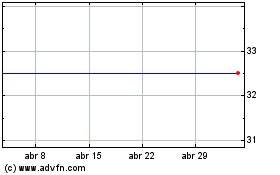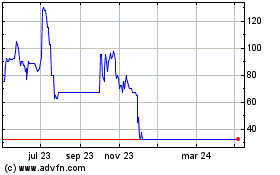TIDMTNT
Tintra PLC
04 February 2022
4 February 2022
TINTRA PLC
("Tintra", the "Group" or the "Company")
Artificial Intelligence's Role in Banking 3.0
Richard Shearer, Group GEO, recently authored an article on
"Artificial Intelligence's Role in Banking 3.0", which was
published in Global Banking & Finance Review, a leading Online
and Print Magazine, which has evolved from the growing need to have
a more balanced view, for informative and independent news within
the financial community. The article can be viewed online at:
https://www.globalbankingandfinance.com/artificial-intelligences-role-in-banking-3-0/
A full copy of the text can also be found below. This is the
latest of a series of articles on the use of artificial
intelligence in banking and financial regulation, as well as the
benefits of frictionless banking, by Mr Shearer, the other three
can be viewed here:
https://thefintechtimes.com/tintra-plc-democratising-financial-regulation-via-artificial-intelligence/
https://www.financederivative.com/revolutionising-global-banking-through-the-power-of-ai/
https://www.finance-monthly.com/2021/06/the-ever-increasing-need-to-apply-frictionless-banking-technology-to-cross-border-transactions/
For further information, contact:
Tintra PLC
(Communications Head)
Hannah Haffield
h.haffield@tintra.com
Website www.tintra.com 020 3795 0421
Allenby Capital Limited
(Nomad, Financial Adviser & Broker)
John Depasquale / Nick Harriss / Vivek
Bhardwaj 020 3328 5656
Artificial Intelligence's Role in Banking 3.0
In the modern banking world new technologies play a widely
reported role in anti-money laundering (AML) protocols preventing
financial crime - however it is important that we do not overlook
technology's potential for establishing financial innocence.
To businesses and institutions operating in and between
developed markets, whose international transactions are fast and
painless, this sentiment may seem counter intuitive. AML compliance
is necessary for regulatory reasons, and catching out bad actors
is, of course, a primary goal of any business - but why should we
view AML technology through the lens of establishing innocence?
This is a question which emerging market corporates will have no
difficulty answering if they have ever attempted to interface with
counterparts in developed markets.
Entities based in emerging markets are often tarred with the
brush of AML risk due to their geography and unrelated to their
specific business, and - consequently - such organisations find
international transactions lengthy, arduous and expensive as they
navigate an AML compliance process that operates from a base level
that is an unfair assumption of their risk.
As such, in my view, embracing advances in technologies such as
natural language processing (NLP) and machine learning (ML) is
essential - not only for financial services firms looking to
enhance their ability to properly mitigate, but to progress the
much bigger, and indeed more noble, goal of removing the biases
against emerging markets, nationalities or cultures that currently
colour the AML landscape.
How then, can NLP and ML technologies help, not only in
addressing financial crime, but in creating an environment where
those in emerging markets with upstanding credentials are treated
and serviced free from these baked in prejudices?
Intelligent machines
It's worth taking a moment to define these terms.
"Natural Language Processing" pertains, in broad terms, to
anything related to processing language. As such, NLP varies in
terms of complexity - it may be employed for tasks like "term
frequency", calculating how often a given word appears in a text,
but NLP can equally be used for the purposes of translation;
classifying the sentiment of a piece of text; or even detecting
sarcasm, irony, and fake news in a social media context.
In order to perform the more complex tasks in this spectrum
however, machine learning may also be required.
"Machine Learning" describes a variety of artificial
intelligence ("AI") with an emphasis on allowing machines to learn
in a similar manner to humans, through a mix of data and
algorithmic methods.
ML differs from traditional programming. Traditional programs
see a solution to a problem defined through hand-crafted rules that
are implemented in computer code. In ML, by contrast, the algorithm
itself learns those rules - and, by extension, how to solve the
problem by analysing data.
This principle makes ML considerably more powerful than
traditional programming, since it is capable of learning a
complicated sets of rules that are impossible to define
manually.
AML applications of these Technologies
In the context of AML practices, it's not difficult to see the
appeal of technology like this.
After all, manual investigations into potentially rogue
activities are lengthy processes which involve employees
investigating vast swathes of transaction histories and other
information - and often only happen after the event.
This process is made all the more difficult to manage for
financial institutions when a large number of "suspicious incident"
alerts are often false alarms. But each potential issue must be
investigated with the same vigour to ensure a robust AML
framework.
By contrast NLP/ML allows financial institutions to automate
these processes - the more sophisticated solutions, that my team
and I are very focused on, are capable of interpreting the vast
amounts of text-based data that a human would otherwise need to
analyse.
These systems are able to recognise patterns and relevant
information, consider appropriate context and cross reference
faster and more accurately than a human, or indeed teams of humans,
may overlook.
Crucially for me, NLP/ML - performed by intelligent machines
capable of learning - can potentially undertake these tasks at the
same time as neutralising human bias, which has promising
implications for organisations and individuals in emerging markets
who face these preconceptive biases frequently.
Less human, more humane
This application of NLP/ML has a range of benefits for all
stakeholders, not least with reductions in the level of false
positives representing savings in time and money for financial
services companies.
There is, however, equal value to be found in NLP/ML tools which
bring this power to bear on addressing the inequities that
currently prevent frictionless transactions between these
markets.
This piece began with reference to establishing cases of
financial innocence as well as financial crime - and, while NLP/ML
makes this possible, it would be wrong to assume that such tools
will magically resolve the issue of AML bias.
As such, "establishing innocence" isn't just a different
perspective on the benefits of NLP/ML solutions - it's an ethos
that I believe should be actively pursued by financial services
businesses as our global economy becomes more and more
integrated.
Removing human prejudice from the decision-making process is
vital, but a truly fair approach can only be achieved when the
creators of these solutions acknowledge that the prejudice exists
in the first place.
After all, NLP/ML is entirely subject to bias - or "algorithmic
unfairness,". A good example - taken from research published in ACM
Computing Surveys - is a piece of software called COMPAS, used by
US judges to assess offenders' risks of reoffending, which was
found to exhibit bias against African-American individuals -
illustrating clearly that human prejudice can inflect algorithmic
decision-making. To make the technology better we need to be
better, is may be one way of thinking about it.
This kind of example gives food for thought. If NLP/ML tools are
trained without thought being given to how to eradicate bias in an
AML context, then we'll be left with intelligent machines that
simply replicate that bias - meaning that prejudice will be
automated rather than eliminated! A terrifying concept and one
fraught with complex ethics.
The next step
The financial services sector is in the midst of digital
transformation and as such the time is ripe to seize the wheel and
ensure, as we embrace more sophisticated tech solutions, that the
journey ends at a fair and equitable destination - no matter where
a given transaction takes place.
ENDS
Richard Shearer, CEO of Tintra PLC
https://tintra.com
This information is provided by Reach, the non-regulatory press
release distribution service of RNS, part of the London Stock
Exchange. Terms and conditions relating to the use and distribution
of this information may apply. For further information, please
contact rns@lseg.com or visit www.rns.com.
Reach is a non-regulatory news service. By using this service an
issuer is confirming that the information contained within this
announcement is of a non-regulatory nature. Reach announcements are
identified with an orange label and the word "Reach" in the source
column of the News Explorer pages of London Stock Exchange's
website so that they are distinguished from the RNS UK regulatory
service. Other vendors subscribing for Reach press releases may use
a different method to distinguish Reach announcements from UK
regulatory news.
RNS may use your IP address to confirm compliance with the terms
and conditions, to analyse how you engage with the information
contained in this communication, and to share such analysis on an
anonymised basis with others as part of our commercial services.
For further information about how RNS and the London Stock Exchange
use the personal data you provide us, please see our Privacy
Policy.
END
NRABZLFBLLLFBBQ
(END) Dow Jones Newswires
February 04, 2022 05:29 ET (10:29 GMT)
Tintra (LSE:TNT)
Gráfica de Acción Histórica
De Mar 2024 a Abr 2024

Tintra (LSE:TNT)
Gráfica de Acción Histórica
De Abr 2023 a Abr 2024
